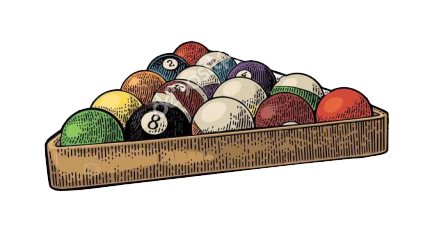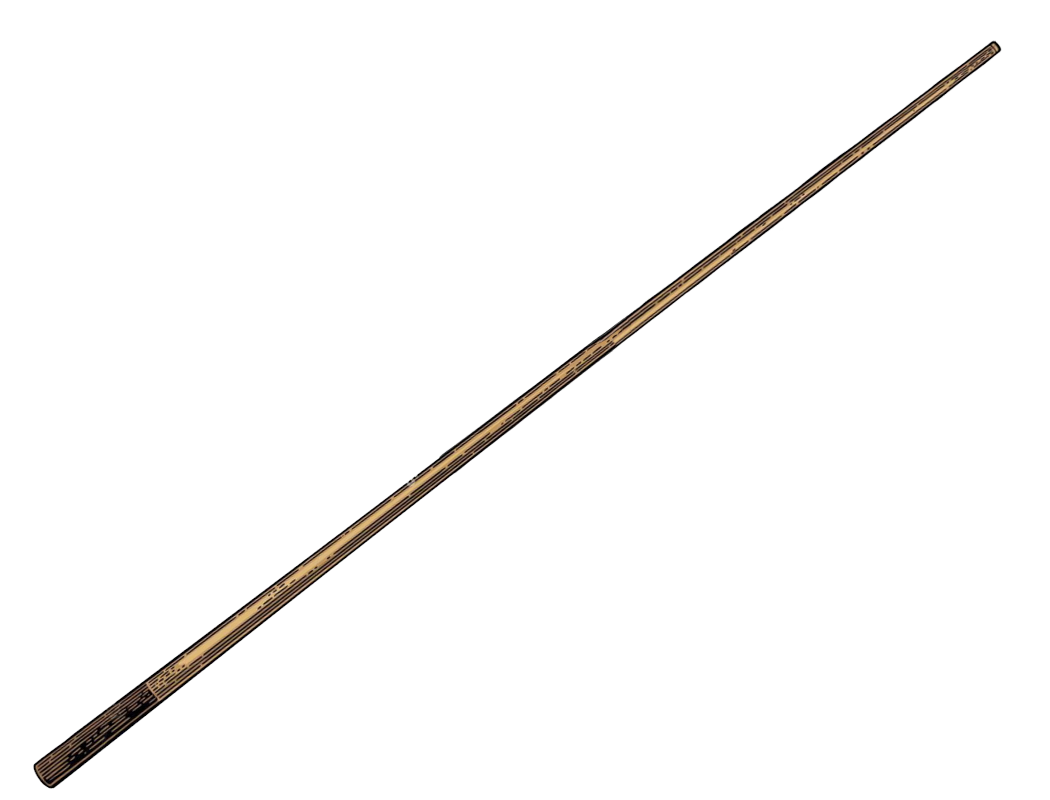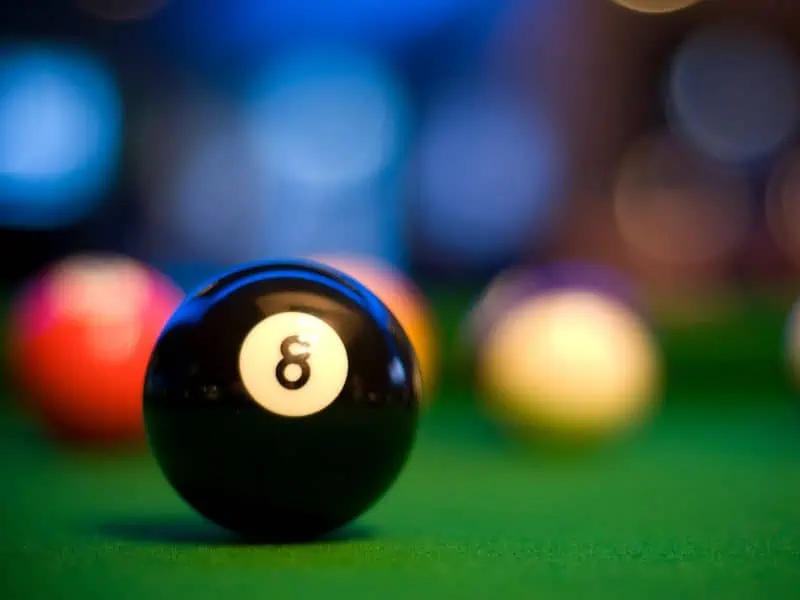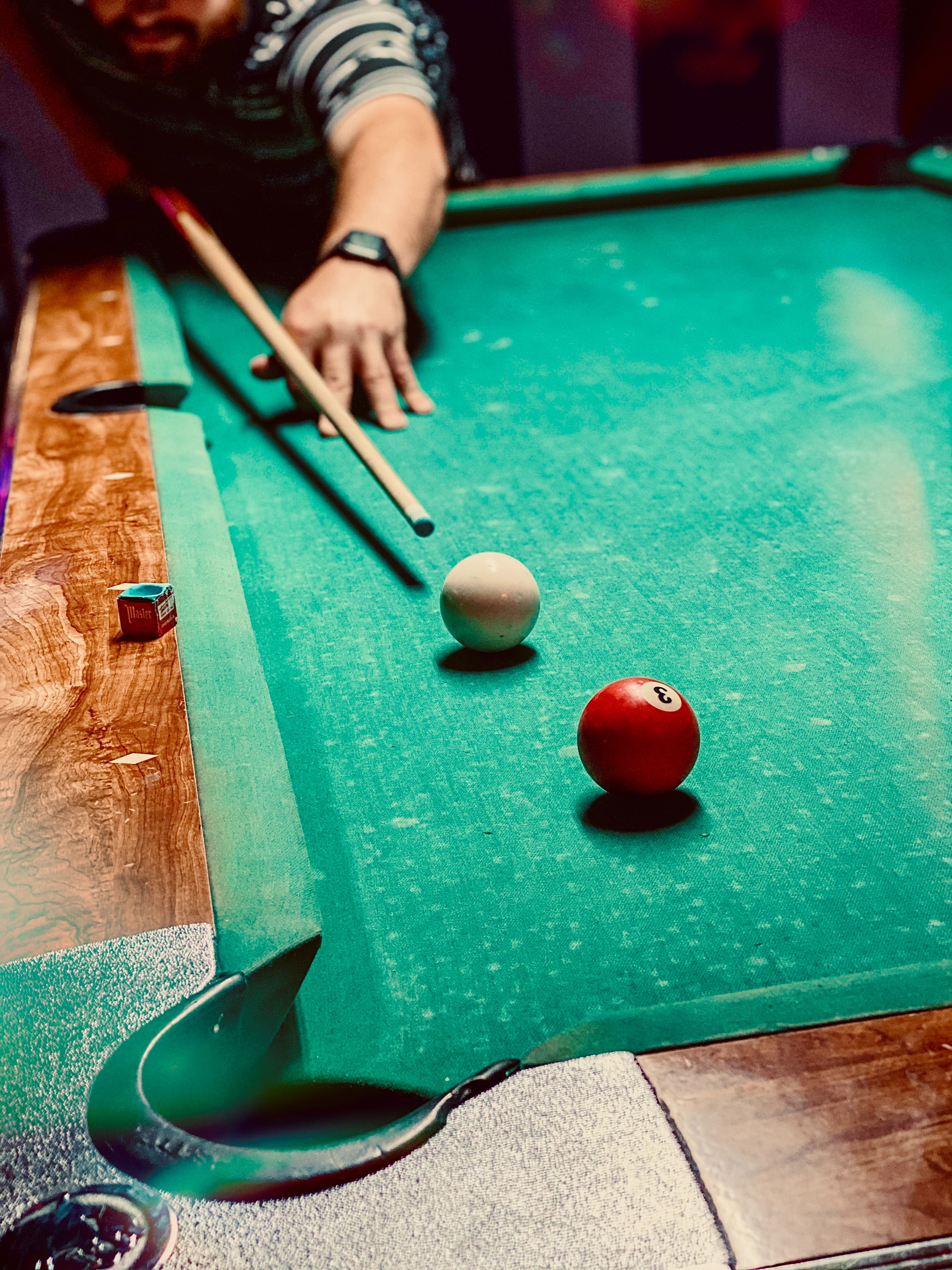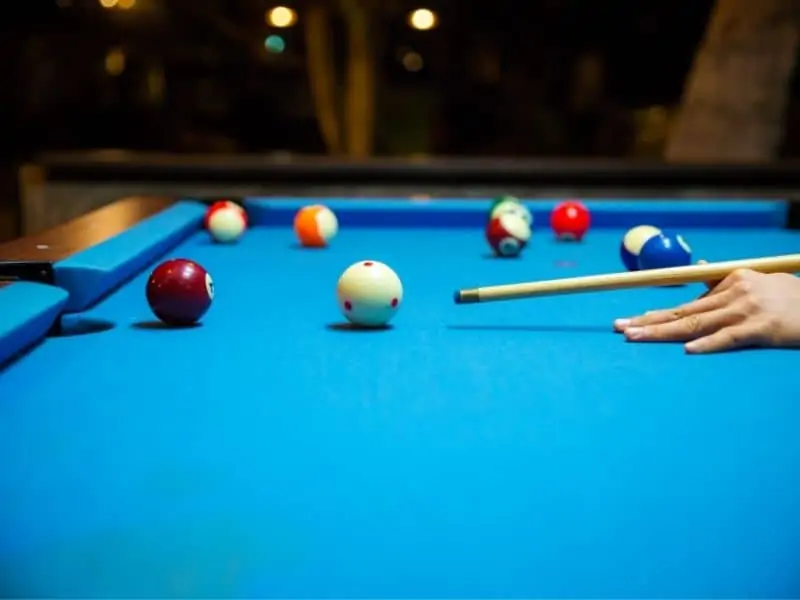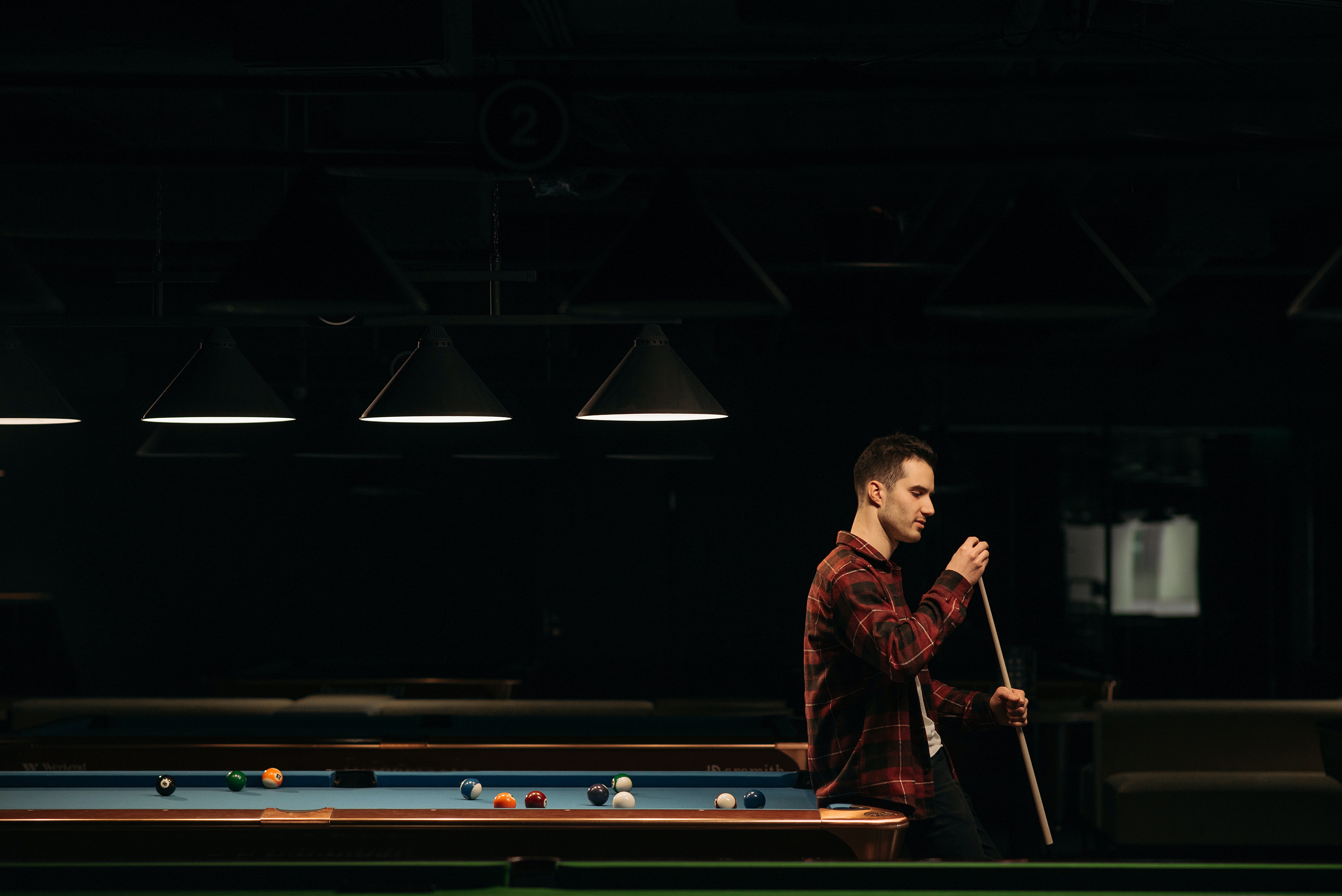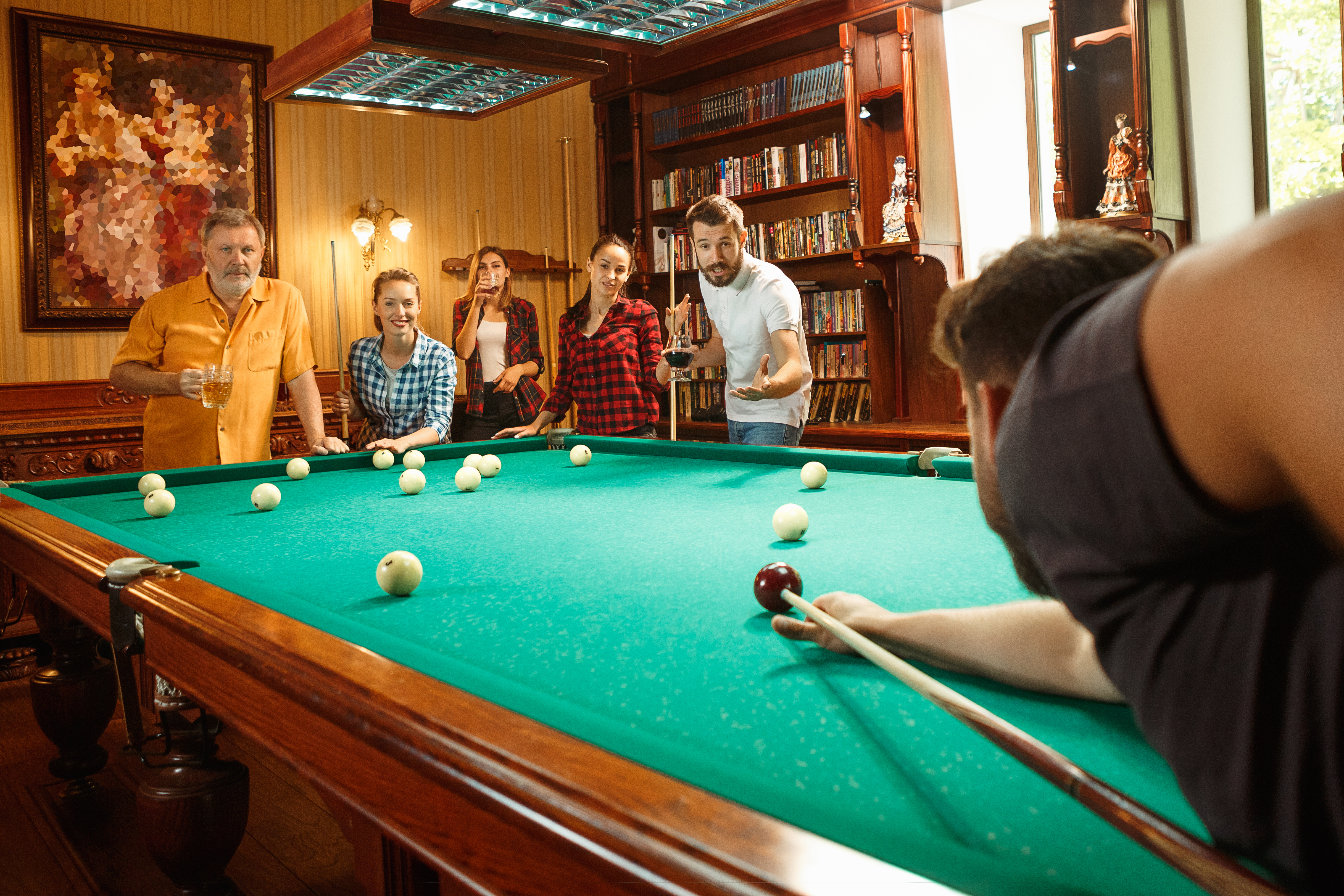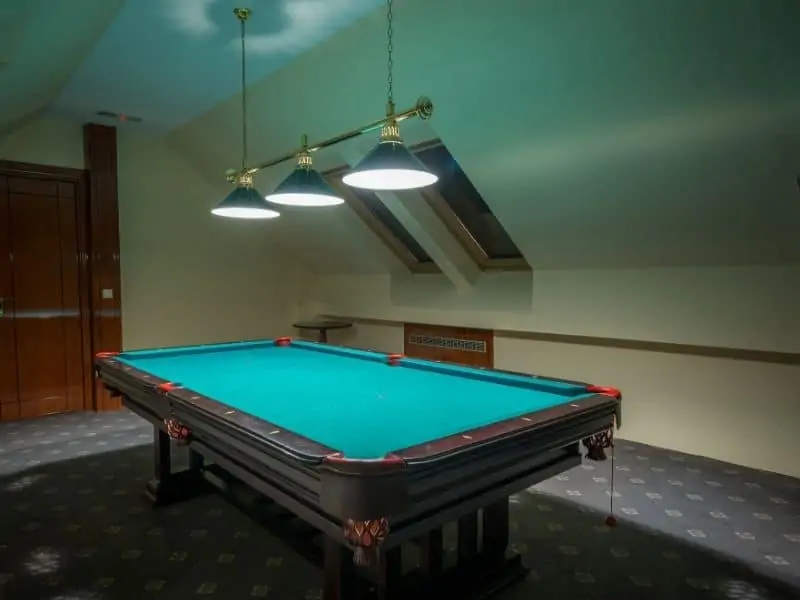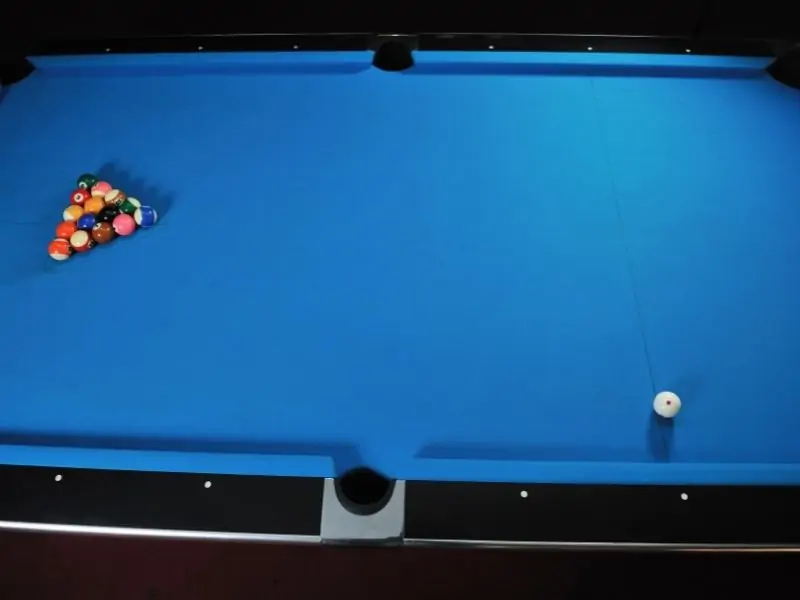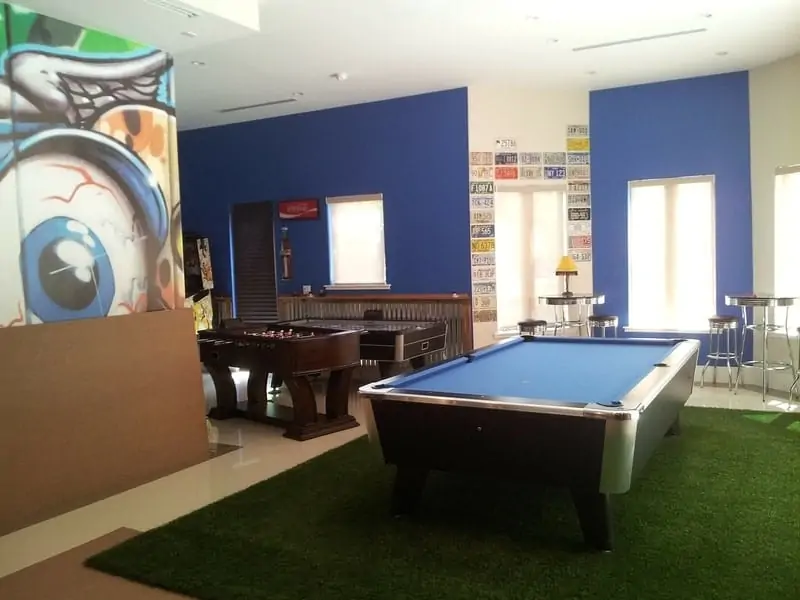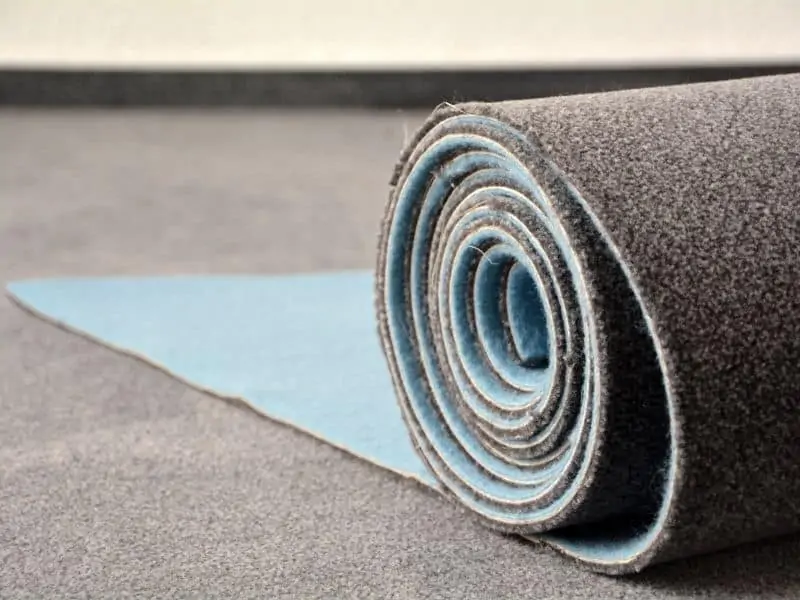There are so many different variations of 8-ball pool that it’s hard to know which set of rules to play by. Chances are you’ve probably been in the middle of a game with someone when a certain rule pauses the game and leads to controversy. The rules you know aren’t quite the same as the rules your opponent plays by. When you can’t come to an agreement, the best thing to do is to find 8 ball pool rules: the simple version.
You may have heard of ‘bar rules’ which people generally agree on, but even these rules vary depending on the region. Luckily, we’ve determined the simple 8 ball rules that everyone can play by.
While slightly different than professional play, these rules are simple for a reason. They’re for those casual players and for those players who have higher aspirations. But the best part is that you don’t have to read 15 pages of complex rules to get a game going.
If you’re looking for the simple rules of 8 ball so you and your friends can start playing right away, you’re in luck. This article will walk you through, step by step, how to play 8 ball pool the simple way.
How To Rack
To start off the game right, you and your opponent should agree on the proper rack formation. While you don’t have to agree on where every single ball goes, there are a few important placements to consider.
The 8 Ball
The 8 ball should always be located in the center of the rack; two rows from the top and two rows from the bottom of the triangle. This is widely agreed upon throughout the pool world.

Solids and Stripes
The rest of the triangle rack should be random, save for the two corner balls at the bottom of the triangle. One of the corner balls should be a solid, and the other a stripe. The number 1 ball should be at the top of the triangle.
The break formation should be aligned with the apex ball (Number 1 Ball) at the foot spot on the table (usually a little round marker at one end of the table). The bottom of the break formation should be aligned parallel with the closest end of the table.
Heres a little diagram I found on pooldawg.com that should help you identify the foot spot on the table a bit easier.
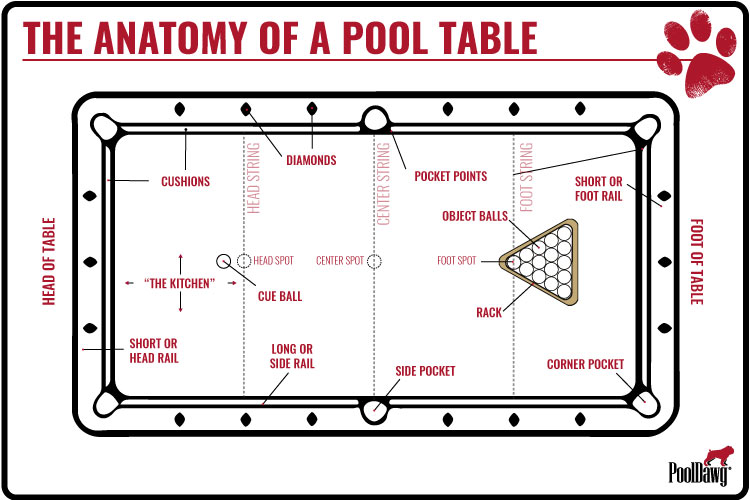
Anatomy of a Pool Table - An infographic by the team at PoolDawg Billiards Supplies
How To Break
Which player or team breaks should be determined initially by a coin toss. Once a game has been played, who breaks and who racks the next game can either be taken in turns or determined by who loses the game. In some areas, losers rack and winners break. In others, winners rack and losers break. If the players cannot agree on which route to take, a coin flip will work well for every break situation.
Placement Of The Cueball To Break
The cue ball can be placed anywhere behind the head string, which is denoted by a line between the second markings at the head end of the table. On most recreational tables this line is imaginary, but can easily be determined by looking at the diamonds or markings along the sides of the table. Sometimes the area behind the head string is also called ‘the kitchen’. So, shooting from ‘in the kitchen’ should be considered the same as shooting from behind the head string.
Refer to diagram above for more details.
A Legal Break
What constitutes a legal break is four balls hitting cushions. It doesn’t matter what balls, or what cushions, as long as four different balls make contact with cushions. If four balls do not come into contact with cushions on the break, the opponent can choose to either play the table as is or ask for a re-break.
Additionally, if the cue ball goes into a pocket on the break, the opposing player can either place the cue ball and shoot from anywhere behind the head string or ask for a re-rack and re-break.
If the 8-ball is potted (sunk) on the break, the opposing player can ask for a re-rack and re-break, or the 8-ball can be re-spotted on the table and play can continue.
Assigning Solids and Stripes
After the break is made, the next rule concerns assigning each player either solids or stripes. Before this happens, the table is considered ‘open’. This means that either player can sink or ‘pot’ solid or striped balls.
If one or more object balls (except the 8-ball) are potted on the break, the player who broke can continue to shoot until he misses. The next ball he pots will determine who is solid and who is stripes.
For example: if a player sinks both a solid and a stripe on a legal break, and then pots a solid on the next shot, that player will be solids and the opponent will be stripes. However, if a player sinks both a solid and a stripe on a legal break, but misses the next shot, the table is considered open. The opposing player can then choose whatever object ball to aim for without creating a foul.
The table is only open until one of the players legally pots one or more object balls after the break.
A player continues shooting until she misses or fouls. At which point it’s the other player’s turn. It’s not uncommon for skilled players to only take one or two turns during the game, as they continue to sink their object balls back to back, missing and fouling rarely. On the other hand, it’s not uncommon for amateur players to take many turns during the game, missing or fouling often until they develop their skill.
Winning The Game
The game is won when one of the players first pots all of their assigned object balls (solids or stripes) and then legally pots the 8-ball. A legally potted 8-ball means that the player first calls which pocket the 8-ball will be going in and then successfully sinks the ball in that pocket. If the player misses the pocket, it’s the opposing player’s turn to shoot until a foul or miss occurs.
If, however, the 8-ball goes into any other pocket other than the one called, the opposing player wins the game. The opposing player also wins if the cue ball is pocketed along with the 8-ball on a called 8-ball shot. Even if the 8-ball goes into the called pocket. The cue ball has to stay on the table in order for an 8-ball shot to be legal.
8 Ball Fouls Explained
Some types of fouls are fairly common in recreational pool, while others happen rarely. When a foul occurs, play passes to the opposing player, who can place the cue ball anywhere on the table. Here are some of the most common fouls:
Hitting the Opposing Player’s Object Ball: Once each player’s suit is determined, a shot any player takes with the cue ball must contact a ball of their own suit first, whether it’s solids or stripes. If the cue ball first contacts the opposing player’s object ball, it is considered a foul. If two balls, one of each suit, are hit simultaneously, this is a ‘split shot’ and is considered legal.
Cue Ball Scratch: A scratch is a foul in which the cue ball is pocketed or sent off the table.
Lack of Rail Contact: If no ball is pocketed on a shot, either the cue ball or an object ball must come into contact with a rail, after the object ball has been hit. Otherwise, it’s considered a foul.
No Balls Touched: If an object ball is missed and the cue ball fails to contact any other ball on the table, it’s considered a foul and play passes to the opposing player.
Balls Knocked Off Table: A foul occurs if a player’s shot results in any of the balls being knocked off the table.
Shooting Out of Turn: It’s a foul if either player shoots out of turn. The balls should be left as they are after the mistaken shot, and played as is.
Touched Balls: A foul occurs when a player touches any object balls outside of a legal shot. This includes hands, clothing, arms, or cue sticks.
Cue and Stick Fouls: If a player uses the cue stick to contact and push the cue ball for longer than what’s considered normal for a shot, it should be considered a foul. Multiple hits on the cue ball in the same shot should also be considered a foul, as well as hitting the cue ball with anything other than the cue stick’s tip.
Playing While Balls Are In Motion: It’s a foul when a player takes a shot before the balls have come to a complete stop from the previous shot.
Shots Without One Foot On Floor: Unless the player has a disability that prevents this, at least one foot must be on the floor during any given shot to prevent a foul.
Ball In Hand Fouls
Some rules dictate that any foul should result in free placement of the cue ball anywhere on the table by the opposing player. Other schools of thought suggest that any foul gives the opposing player free placement of the cue ball anywhere behind the head string or ‘in the kitchen’.
Which way you play should consider your respective skill levels. But, to ensure a fun game and enjoyment for all, the rules should be agreed upon by all parties.
In Conclusion
Whether you follow the rules above or some other set of rules that is more comfortable for you and the other players doesn’t really matter as long as everyone agrees on the rules you play by. This will ensure that everyone is on the same page and has the opportunity to have fun and test their skills.
Pool is meant to be a fun, relaxing game that you can play with your friends or against perfect strangers. Getting caught up on the different rules can turn a fun game into a headache. So, take these simplified rules and try them out. Modify them if you need to or keep them as they are. Just remember to have fun!
Other Articles You May Be Interested In:
- Best Pool Cues for the Money: Discover the top pool cues that offer great value without breaking the bank.
- Pool Table in the Garage? Here’s What You Need to Know: Understand the essential considerations for setting up a pool table in your garage.
- Break Cue vs Playing Cue: What’s the Difference?: Learn the key differences between break cues and playing cues to enhance your game.
- How Much Does a Good Pool Cue Cost?: Explore the factors that determine the cost of a high-quality pool cue.
- Are Mini Pool Tables Worth It? A Complete Guide: Read our comprehensive guide on mini pool tables and decide if they’re the right fit for you.
